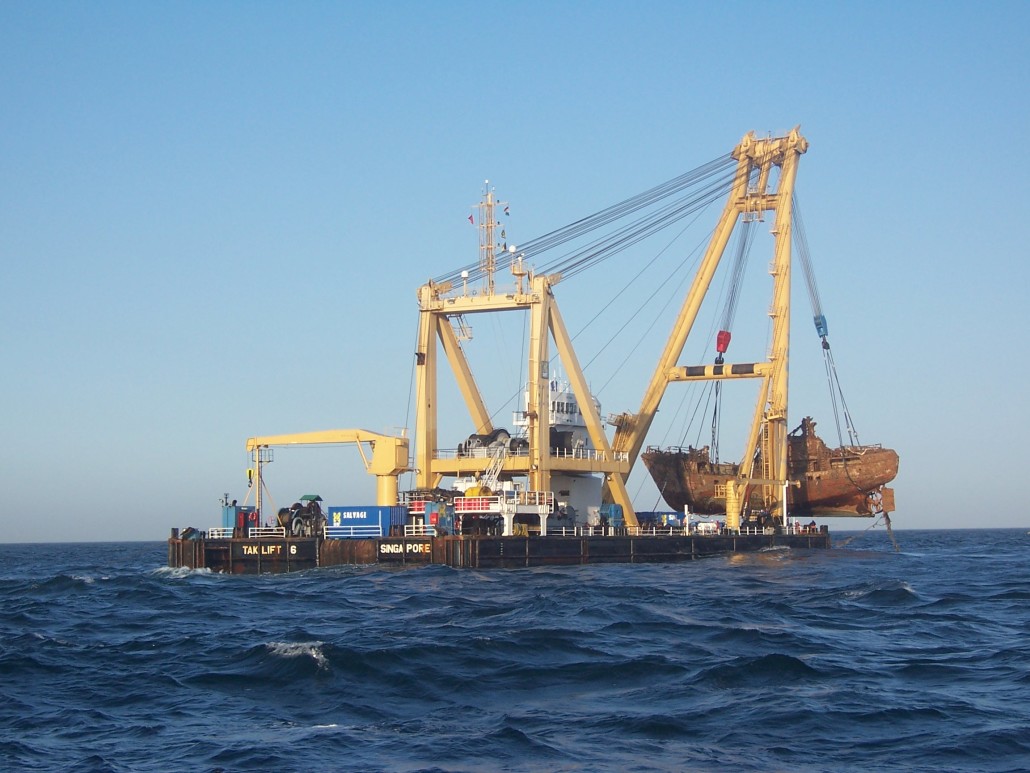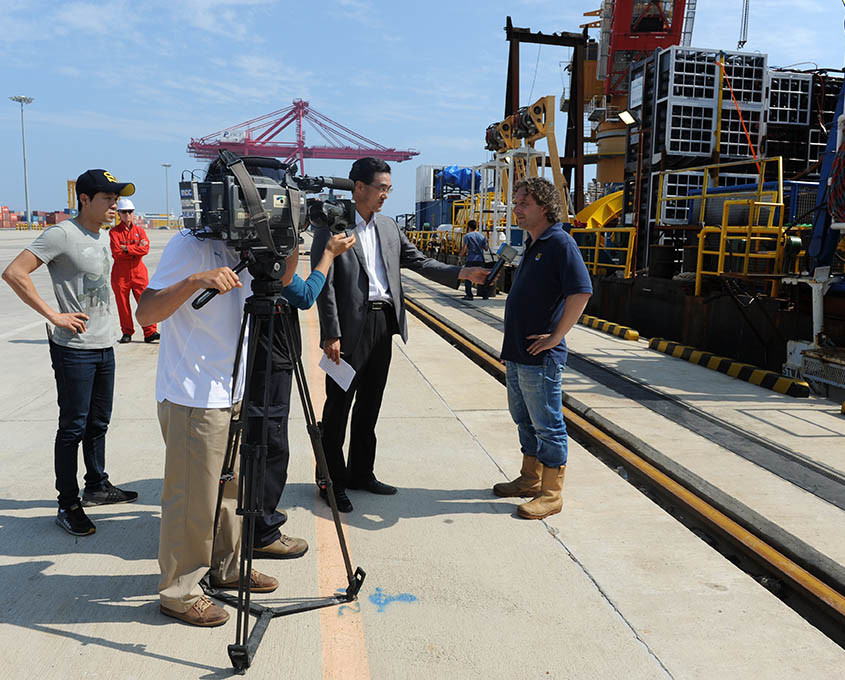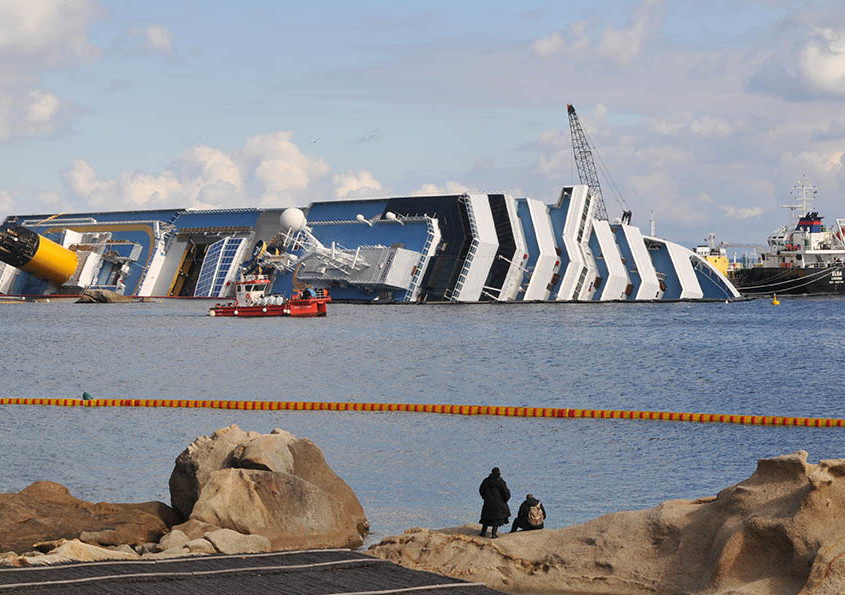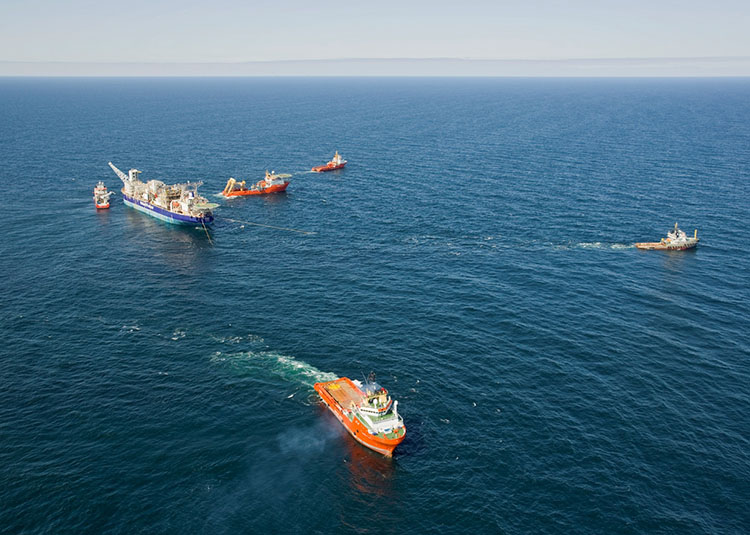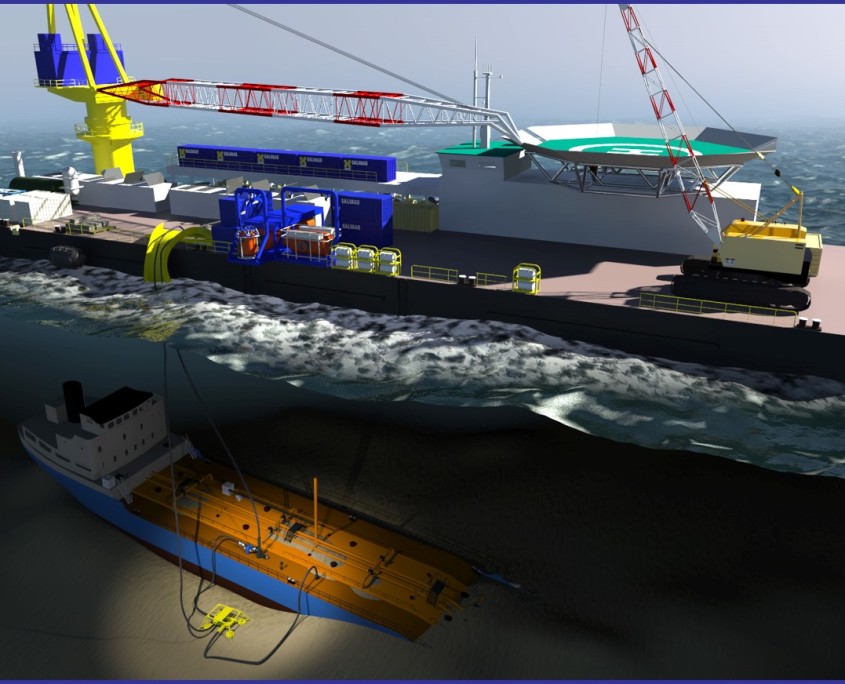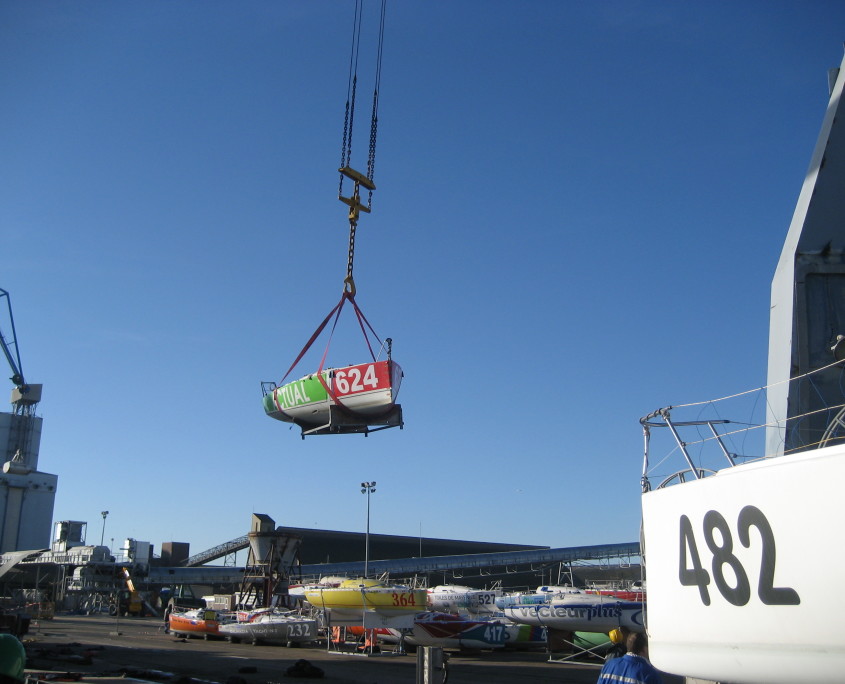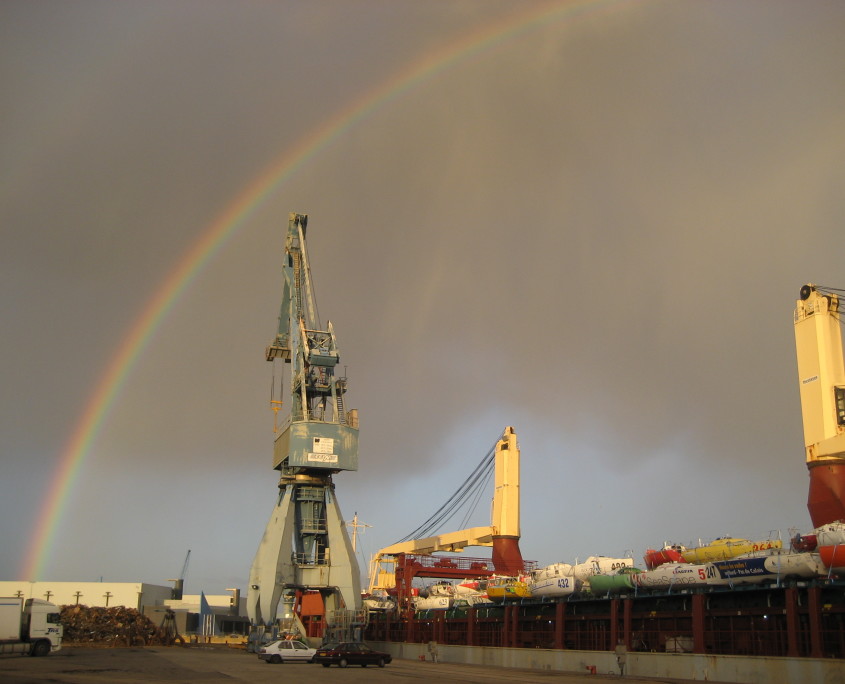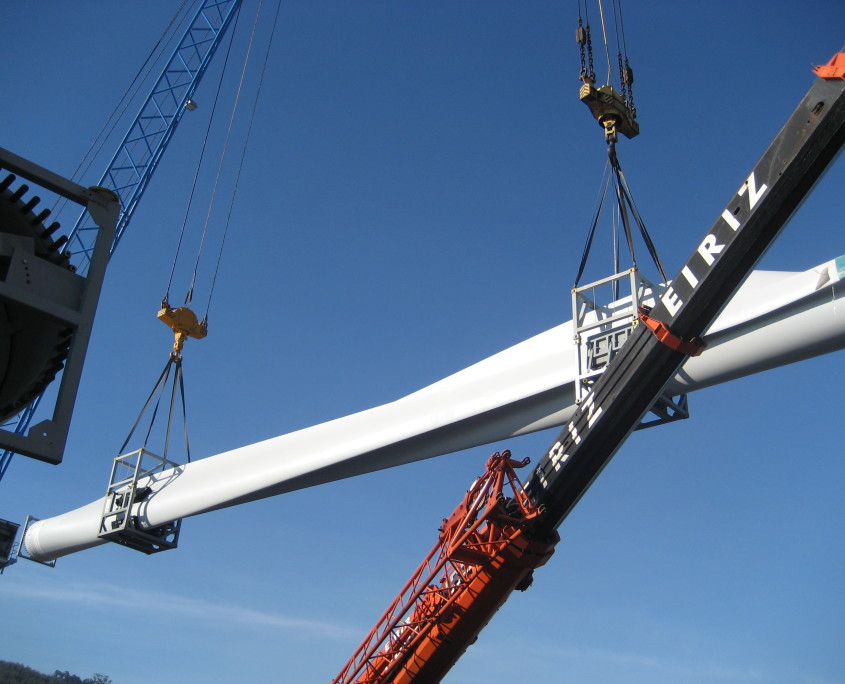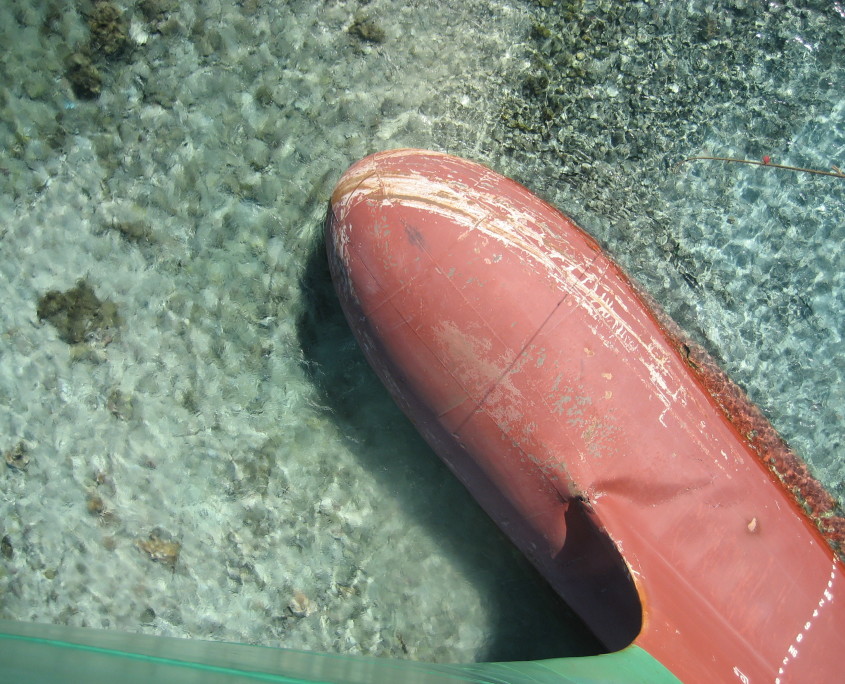Re-Floating MV FLASH
The mv FLASH grounded at the most northern tip of Africa. All fuels were removed from the bulk carrier FLASH and after extensive lightering of cargo she was refloated and towed to a safe area were she was put at anchor.
FPSO Field Installation
FPSO Enquest Producer Field Installation and Hook-Up
During the installation of the EnQuest Producer in the Alma-Galia field in spring of 2015, MASS was involved in connecting of the 9 pre-laid moorings to the turret of the FPSO. The AHT ‘Normand Progress’ picked up the moorings from seabed by means of ROV and succesfully connected the 9 moorings as per planned procedure to the fore runner chains, deployed from FPSO.
MASS supervised all operations on board the AHT ‘Normand Progress’ and made sure all necessary information was relayed to the Boskalis Marine Operations representaive on board the FPSO.
Wreck Removal
Salvaging NOMO wreck’s Rijkswaterstaat (Dutch Government)
Wreck removal to ensure safe navigation: NOMO wrecks
Deepwater Oil Recovery
The task was to remove oil from the wreck of the tanker ‘Kyung Shin’. This tanker went down many years ago off the country’s south east coast, in a water depth approaching 100 m.
Remove oil from 100 m water depth
The task was to remove oil from the wreck of the tanker ‘Kyung Shin’. This tanker went down many years ago off the country’s south east coast, in a water depth approaching 100 m. The crane barge ‘Smit Borneo’ was mobilised as the surface platform for this operation. The spread included a saturation spread and team, hot-tap equipment (for pumping from the submerged tanks) and a newly designed tank heating system. The operation recovered about 500 tonnes of HFO from the vessel’s tanks.
Tanker sank in 1988
The Korean fuel oil tanker ‘Kyung Shin’ sank in 1988. She was lost in the Sea of Japan, close to the South Korean port of Pohang. Given the depth of the wreck, it was decided not to remove the vessel. However, action was taken to reduce the environmental threat.
Persistent oil seepage
Nevertheless, over the years there has been persistent oil seepage from this wreck. The leakage was small, but KOEM carried out a risk analysis, taking into account the possibility of a larger scale release of oil from the ‘Kyung Shin’. It was at this point that the Korean authorities approached SMIT Salvage, an organisation with a solid track record for successful oil recovery.
Wreck inspection
During 2010 KOEM contracted SMIT Salvage for the task of carrying out a wreck inspection. In response, the crane barge ‘Smit Borneo’ and the multipurpose tug ‘Smit Angola’ were mobilised. The spread included a saturation diving system and other specialised equipment, to take account of the depth at which the inspection would be performed.
Detailed pollutant recovery plan
The diving team surveyed the wreck, measured the volumes remaining in each tank and took samples. Several compartments were found to contain various grades of fuel oil. This information was then used to develop a detailed pollutantrecovery plan. The plan was accepted and SMIT Salvage was then awarded a contract to remove the oil during the summer of 2011.Specialised equipment‘Smit Borneo’ was prepared for this task. The vessel was fitted out with equipment from SMIT’s warehouse in Rotterdam, including a hot-tap system, boilers, heat-exchangers and special pumps and hoses. Meanwhile, the SMIT Subsea SAT-3 saturation diving system was mobilisedfrom Dubai.Success factor the right temperature‘Smit Borneo’ and 80 tbp tug ‘Union Boxer’, departed Singapore in early June for this oil recovery, which proved to be something of a technical tour de force. One crucial success factor involved producing the correct temperatures for optimum pumping of the various fuel oil grades. This was achieved by the use of warm water heating, to reach the required temperature for pumping. Spiral heat exchangers were inserted into each tank, by means of the hot-tap system. When oil reached the surface, it was passed through an oil-water separator. During the operation, completed on July 10, a total of 12 tanks were emptied.
A small gallery
Some pictures of later projects Lees meer

